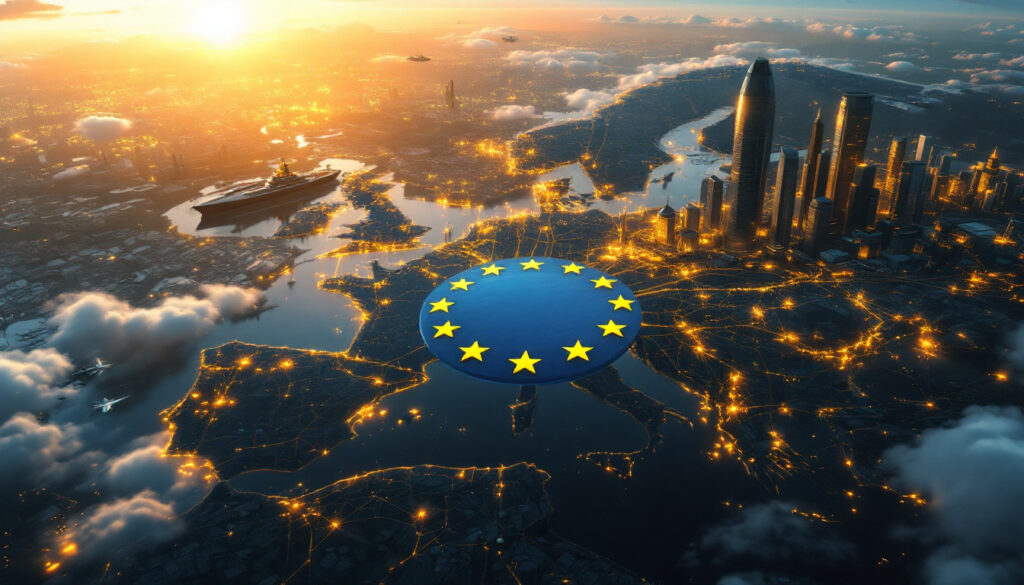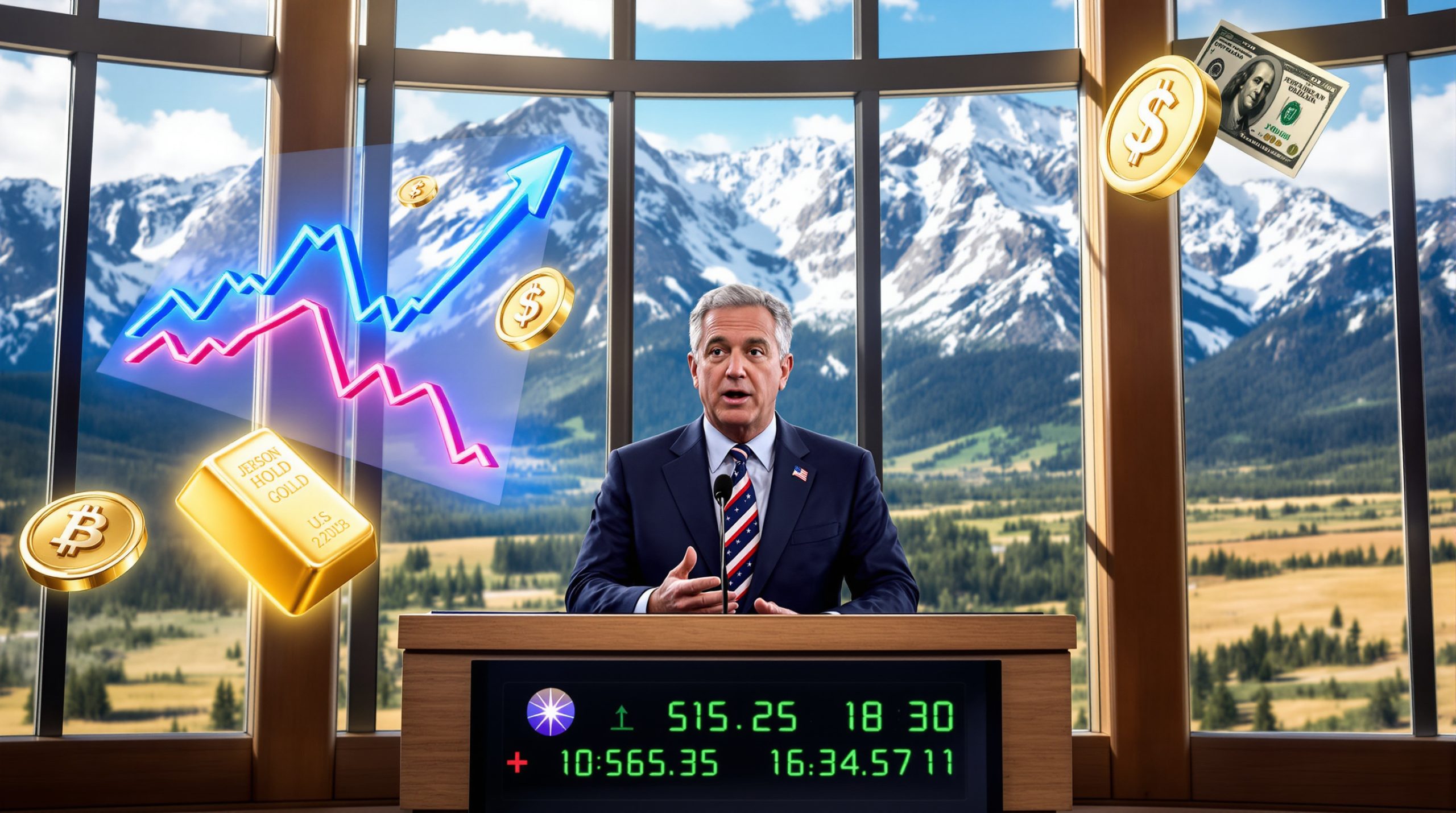Europe's Rise: The Future Superpower in a Changing World Order
Europe stands at a pivotal juncture, poised to transition from a regional bloc to a global superpower. This transformation is underpinned by demographic strength, economic vitality, and geopolitical shifts. With a population exceeding 500 million, a GDP per capita surpassing key competitors, and robust educational frameworks, Europe possesses foundational advantages. The continent's response to evolving U.S. foreign policy and strategic investments in defense and economic integration will determine its trajectory. Below, we explore the multifaceted dimensions of Europe's ascent and the implications for europe and united states of europe dynamics.
How Will Europe Emerge as a Global Superpower?
Europe's emergence hinges on leveraging its demographic and economic assets while addressing structural challenges. The European Union's population of 500 million provides a labor force and consumer base comparable to the U.S. and China. With a collective GDP of $18.8 trillion (2023 estimates), Europe's economic output rivals global leaders, though per capita disparities among member states persist.
The Foundation of European Power
Key Statistics & Data
- Population: 447 million in the EU (2023), projected to stabilize through migration and policies.
- GDP Per Capita: $38,000 (EU average), exceeding China's $12,500 but trailing the U.S.'s $70,000.
- Education: 84% tertiary education enrollment rate, outperforming the global average of 38%.
Expert Quotes & Insights
Clem Chambers, founder of a financial analysis platform, notes: "Europe will rise because it's got 500 million people, higher GDP per head, and literacy rates that outpace many competitors." This contrasts with perceptions of American educational decline, where 54% of adults lack proficiency in literacy.
Technical Details
Europe's industrial infrastructure includes leading aerospace (Airbus), automotive (Volkswagen), and renewable energy sectors, contributing 20% of global manufacturing output. The European Green Deal aims to invest €1 trillion by 2030 to bolster sustainability.
What Global Events Are Triggering Europe's Rise?
Geopolitical realignments, particularly U.S. strategic pivots, are accelerating Europe's autonomy. Reduced U.S. NATO contributions (from 72% in 2000 to 54% in 2023) and tariff policies under the Trump administration have forced reevaluation of geopolitical investor strategies.
US Policy Shifts Creating Opportunity
Key Statistics & Data
- NATO Spending: EU nations increased defense budgets by 15% annually since 2020, reaching $280 billion in 2024.
- Trade Policies: U.S.-EU trade dropped 8% post-2022 tariffs, incentivizing intra-European supply chains.
Expert Quotes & Insights
Chambers highlights: "America's withdrawal from NATO compels Europe to build self-reliance…defense stocks like Saab and Rheinmetall surged 40% in 2023."
Technical Details
The European Defence Fund allocated €8 billion for R&D in 2023–2027, focusing on drone and cyber technologies.
Europe's Strategic Response
The concept of a "United States of Europe" is gaining traction among policymakers, with increased coordination between national military forces. Several European countries are already exploring joint defense initiatives that would operate independently from NATO structures.
European leaders are also strengthening the Euro's position as a global reserve currency. In 2023, the European Central Bank announced measures to promote the Euro in international trade agreements, particularly in energy markets traditionally dominated by dollar transactions.
The Economic Implications of a European Superpower
A unified Europe could recalibrate global financial systems. The Euro constitutes 20% of global reserves, up from 18% in 2015. The European Central Bank's digital euro initiative aims to counter dollar dominance.
The Euro as a Global Currency
Key Statistics & Data
- Reserve Share: Euro holdings reached $2.5 trillion in 2024, second only to the dollar.
- Trade Usage: 36% of EU external trade is invoiced in euros, reducing dollar dependency.
Expert Analysis
"The euro's trajectory mirrors the Deutsche Mark's 1980s rise—methodical but inexorable," states economist Maria Schmidt.
European Financial Independence
Europe is actively developing alternatives to SWIFT and other U.S.-dominated financial systems. The INSTEX mechanism, initially created to bypass Iran sanctions, demonstrates Europe's technical capability to operate independently when necessary.
European regulators are also taking stronger stances against American tech giants, with antitrust fines and data protection regulations reshaping the digital economy landscape. This regulatory leadership gives Europe significant influence over global tech standards.
How Will Defense Capabilities Transform Europe?
Defense autonomy is critical. EU military R&D spending hit €12 billion in 2024, focusing on sixth-gen fighter jets and AI-driven systems.
Building European Defense Infrastructure
Frustration with inconsistent U.S. policy has catalyzed unprecedented cooperation in European defense. France and Germany are leading initiatives for a European Army, with 23 member states joining the Permanent Structured Cooperation (PESCO) defense framework.
The European Defense Agency is prioritizing strategic capabilities in space, cyber warfare, and autonomous systems. These investments aim to eliminate critical dependencies on U.S. technology by 2030.
European Defense Companies and Investment
Key Stats
- Market Growth: Thales and BAE Systems reported 22% revenue increases in 2023.
- Employment: Defense sectors added 300,000 jobs EU-wide since 2020.
Case Study
Germany's FCAS (Future Combat Air System), a €100 billion project with France and Spain, aims for 2040 deployment.
The United States of Europe: Political Integration
Federalization faces hurdles, yet 65% of Eurozone citizens support deeper integration. The 2023 Eurobarometer noted rising anti-EU sentiment in Poland and Hungary (32% opposed).
Models for Greater European Integration
The Franco-German engine is pushing for enhanced powers for the European Parliament, including the right to initiate legislation. Constitutional reforms could transform the Commission into a true executive branch with democratically elected leadership.
Several models for closer integration are being explored, including a "multi-speed Europe" where willing nations move forward with deeper integration while others maintain looser connections. This pragmatic approach might overcome sovereignty concerns.
Challenges to Integration
Expert Insight
"Cultural divides, like Scandinavia's liberalism vs. Visegrád traditionalism, stall policy consensus," notes political scientist Lars Jensen.
Despite these challenges, practical integration continues through technical and regulatory harmonization. The European Banking Union and Capital Markets Union are creating de facto integration even when political rhetoric suggests otherwise.
What Does the Current Market Downturn Mean for Europe?
2024's 30% equity correction mirrors 2008, yet strategic sectors thrive. Renewable energy investments rose 18% amid fossil fuel volatility. Understanding these market dynamics explained is crucial for investors navigating the current landscape.
Navigating Market Volatility
European institutions are better prepared for market corrections than during previous downturns. The Banking Union provides stronger oversight, while the European Stability Mechanism offers €500 billion in crisis response capacity.
Market volatility is enabling European sovereign wealth funds to acquire strategic assets at discounted valuations. French and German state-backed investment vehicles are particularly active in technology and energy sectors.
Strategic Investment Opportunities
Data Points
- Defense ETFs: iShares EU Defense gained 25% YTD.
- Infrastructure: €750 billion allocated to Trans-European Transport Network (TEN-T) by 2030.
Critical minerals and battery manufacturing have become investment priorities, with €43 billion committed to creating a self-sufficient European battery supply chain by 2027. This is particularly important given the current lithium market challenges facing global supply chains.
How Will Gold and Precious Metals Perform in This New Order?
Gold's role as a hedge is cemented. Prices hit $3,500/oz in 2024, with central banks buying 1,200 tons annually. Current gold market trends indicate sustained interest from institutional investors seeking safe havens amid geopolitical uncertainty.
Gold as a War Hedge
European central banks have accelerated gold purchases, with holdings increasing 18% since 2020. This trend reflects growing concerns about currency stability during geopolitical realignments.
The limited annual gold production of approximately 3,200 tons creates natural scarcity, particularly as mining grades decline globally. European investors are increasingly allocating 10-15% of portfolios to precious metals as a strategic hedge.
Strategic Metals Beyond Gold
Europe's industrial base requires platinum group metals for catalytic converters, hydrogen production, and electronics. With Russia controlling 40% of palladium supply, European manufacturers are building strategic reserves and investing in recycling technologies.
The EU's Critical Raw Materials Act specifically addresses these vulnerabilities, designating certain metals as strategic assets and providing funding for domestic mining projects.
The UK's Strategic Position in a Changing Europe
Post-Brexit, the UK contributes €6 billion to EU defense via PESCO. The FTSE 100's 12.5 P/E ratio offers value amid global volatility.
UK-Europe Relations Post-Brexit
Despite political separation, the UK remains deeply integrated with European defense structures. Joint military exercises have actually increased since Brexit, reflecting shared security concerns about Russia.
The UK is pursuing a nuanced "special relationship" with both the U.S. and EU, maintaining strategic ambiguity that historically served British interests during power transitions.
UK Investment Implications
British defense companies like BAE Systems are benefiting from increased European defense spending, with 35% of revenues now derived from continental contracts.
London's financial sector has retained significant influence despite predictions of post-Brexit decline. The UK's regulatory flexibility allows it to serve as an innovation bridge between American and European financial systems.
What Are the Global Implications of Europe's Rise?
A multipolar world emerges. EU-ASEAN trade grew 14% in 2023, signaling shifted alliances. The Euro's rise could reduce dollar hegemony by 10% by 2030. These developments are part of broader global commodities insights that are reshaping international markets.
New Global Power Dynamics
Europe is pursuing "strategic autonomy" across diplomatic, economic, and defense domains. This includes establishing independent channels with China rather than following U.S. policy dictates.
The EU's regulatory frameworks increasingly serve as global standards, with the "Brussels Effect" forcing multinationals to adopt European approaches to data privacy, environmental standards, and consumer protection worldwide.
Impact on Global Markets and Trade
The EU-Mercosur trade agreement signals Europe's pivot toward securing raw materials and agricultural products from South America rather than traditional partners.
European carbon border adjustment mechanisms are reshaping global trade patterns, with manufacturers worldwide adapting production to meet European standards or face significant tariffs.
Europe's rise is triggering reassessment of the Bretton Woods institutions. European leaders are pushing for IMF and World Bank reforms that would reduce U.S. veto power and create more balanced governance structures.
Conclusion
Europe's superpower trajectory hinges on integration, innovation, and strategic autonomy. While challenges persist, the continent's demographic and economic foundations position it to redefine global dynamics. Policymakers must navigate sovereignty debates and invest in critical sectors to sustain momentum.
The concept of a United States of Europe, while not fully realized, continues to evolve through practical cooperation in defense, finance, and regulation. European nations preparing for possible conflict are accelerating integration in ways political processes alone could not achieve.
As geopolitical realignments accelerate, European leadership in sustainability, digital regulation, and strategic autonomy provides a distinct alternative to both American and Chinese models. This "European way" may ultimately prove more influential than military or economic metrics alone would suggest.
Want to Profit From the Next Major ASX Mining Discovery?
Discover why historic mineral discoveries can generate substantial returns on investment by exploring Discovery Alert's dedicated discoveries page, where their proprietary Discovery IQ model transforms complex mining data into actionable investment opportunities before the broader market catches on.




